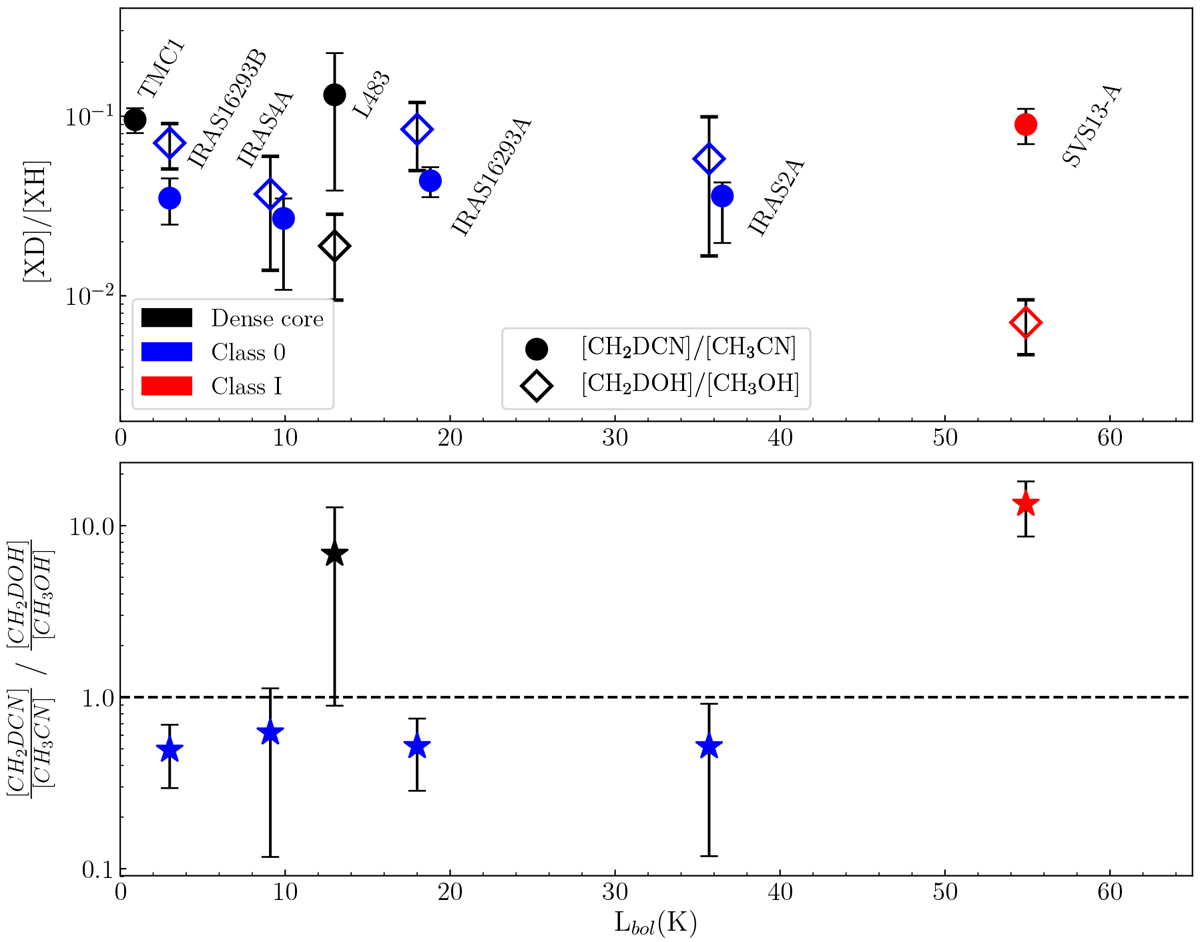Fig. 7

Download original image
Comparison between SVS13-A, Class 0 sources and dense cores. Upper panel: deuteration of methyl cyanide (filled circles) and methanol (open diamonds), derived using the column density ratios of their deuterated and non-deuterated methyl group, as a function of the bolometric luminosity (Lbol) for dense cores (black symbols), Class 0 protostars (blue symbols), and the Class I protostar SVS13-A (red symbol). The shown measurements are from Cabezas et al. (2021), Agúndez et al. (2019), Calcutt et al. (2018), Taquet et al. (2019), Manigand et al. (2019), Jørgensen et al. (2018), Bianchi et al. (2017), and the present work (see text). L483 is an optical dark cloud core hosting a Class 0 protostar. However, the measurement by Agúndez et al. (2019) refer to single-dish observations of the dense core around the protostar. The low rotational temperatures, the narrow FWHMs for the detected lines, and the high 30 m beam dilution at 3 mm further suggest that emission is arising mainly from the ambient cloud, and consequently it is classified as a dense core. Bolometric luminosities are from Kristensen et al. (2012). Lower panel: ratio of methyl cyanide ([CH2DCN]/[CH3CN]) to methanol ([CH2DOH]/[CH3OH]) deuteration for each source, except TMC-1 for which methanol deuteration is not measured.
Current usage metrics show cumulative count of Article Views (full-text article views including HTML views, PDF and ePub downloads, according to the available data) and Abstracts Views on Vision4Press platform.
Data correspond to usage on the plateform after 2015. The current usage metrics is available 48-96 hours after online publication and is updated daily on week days.
Initial download of the metrics may take a while.


